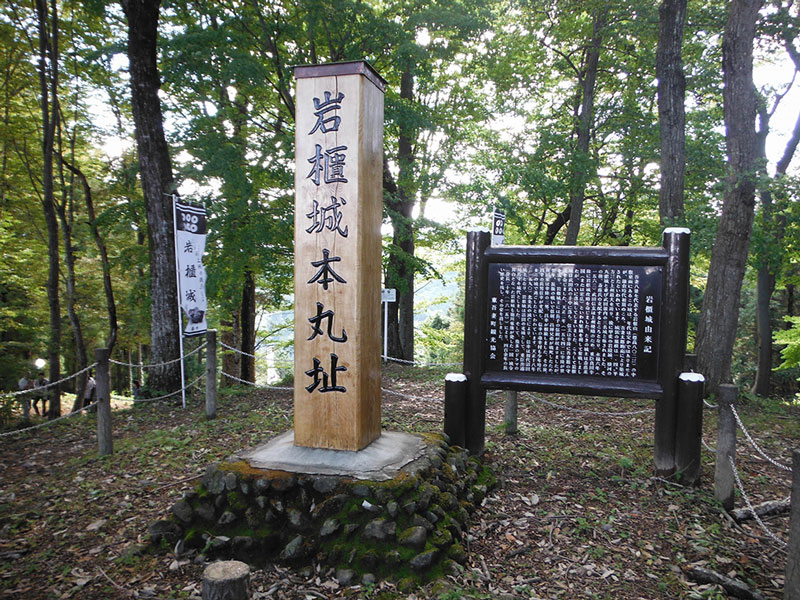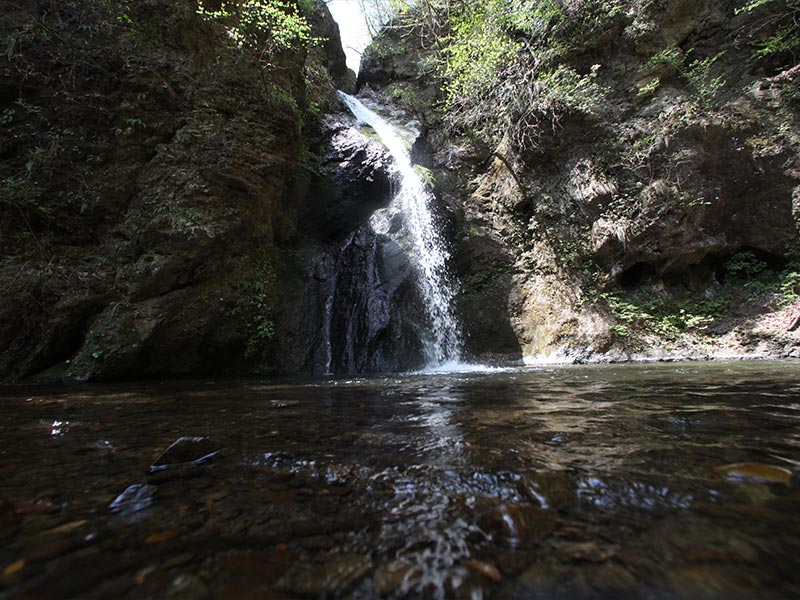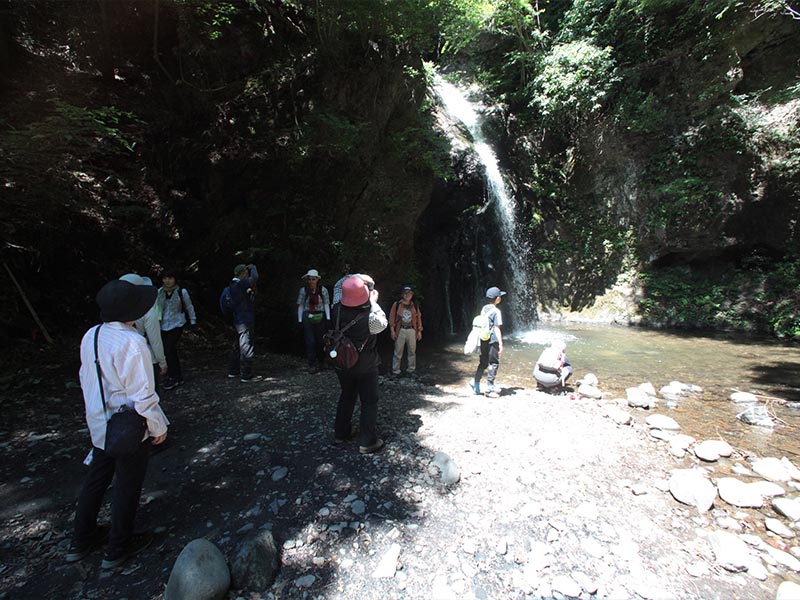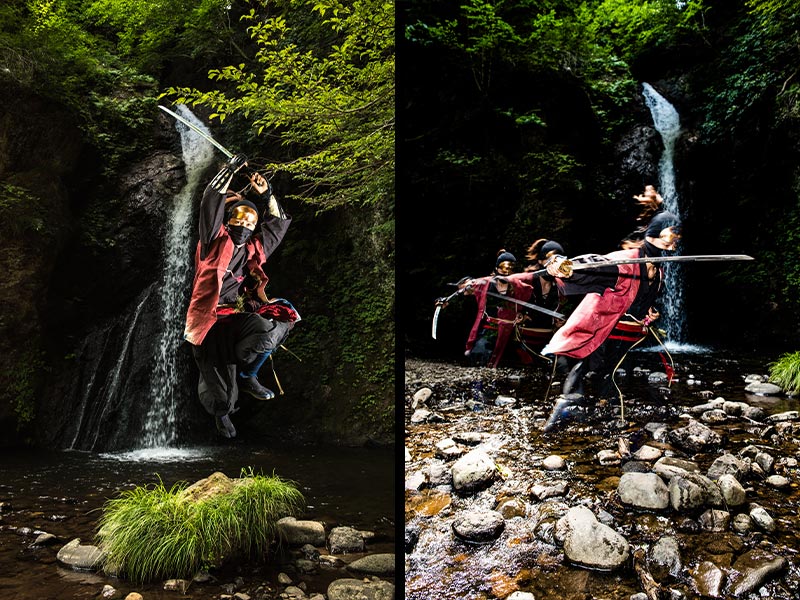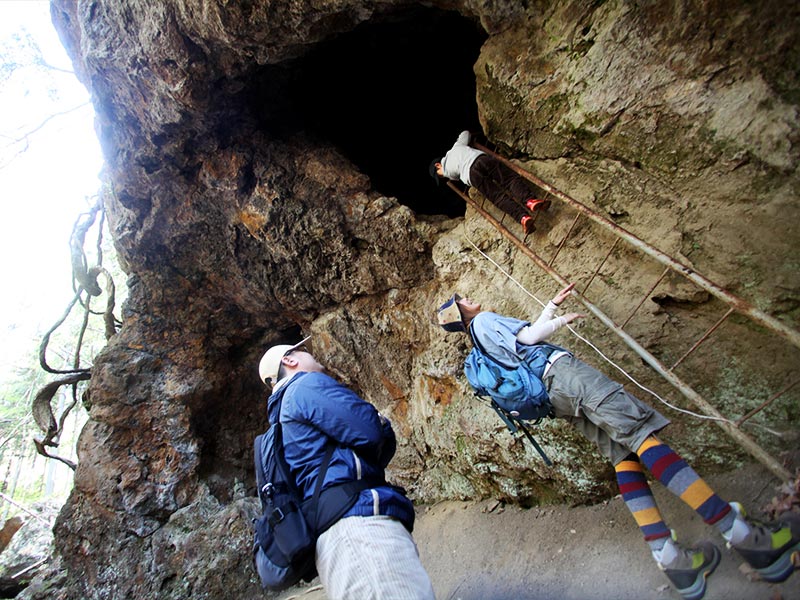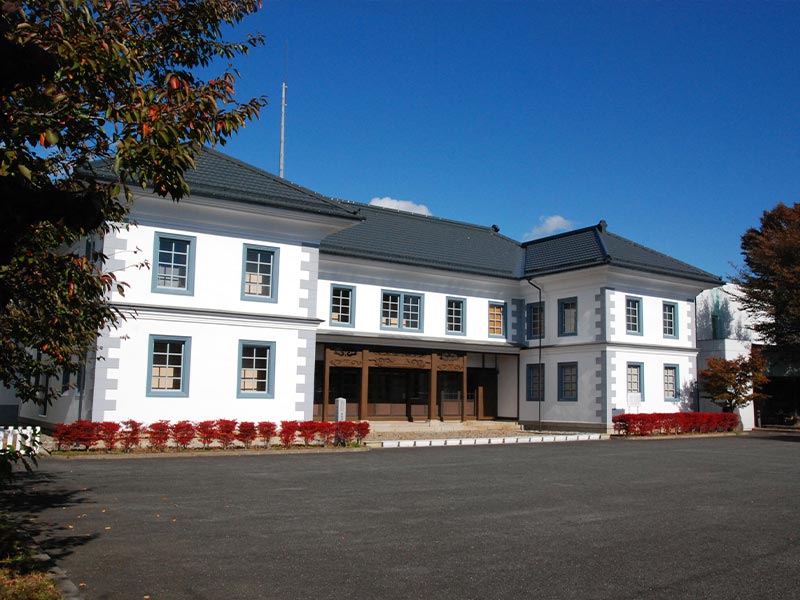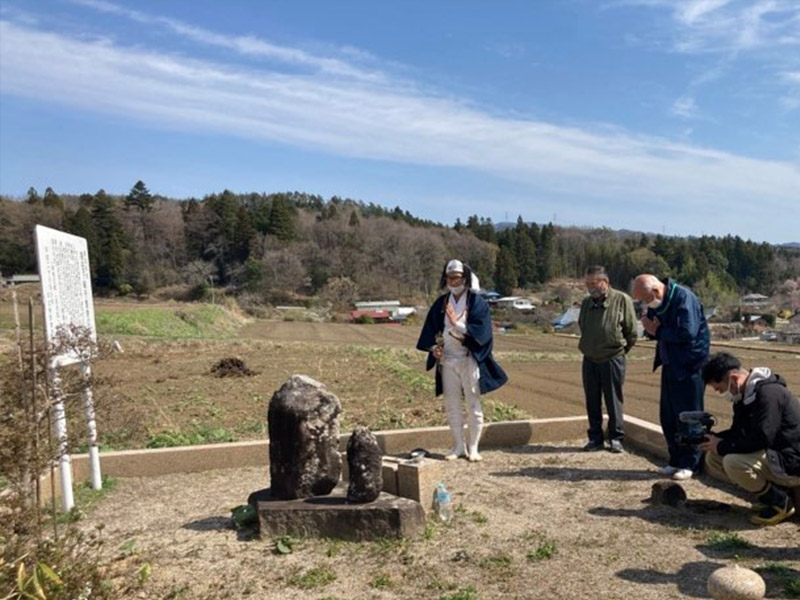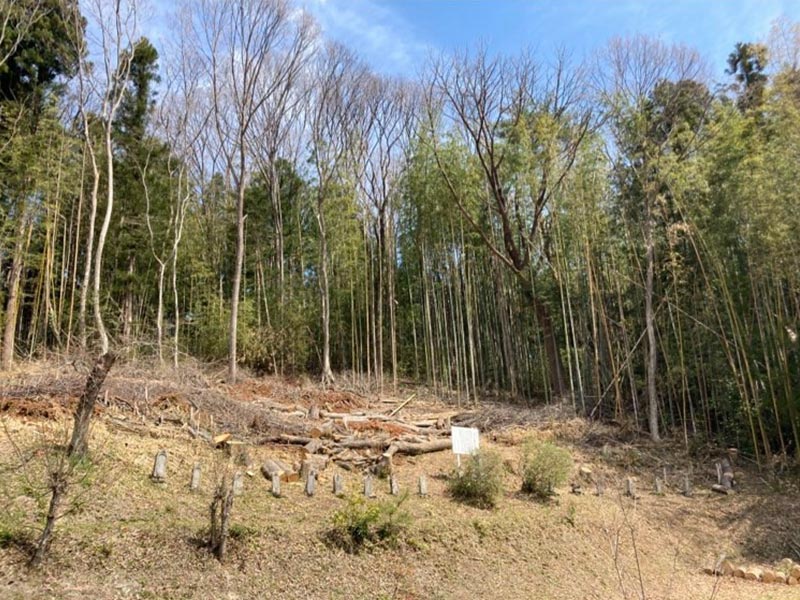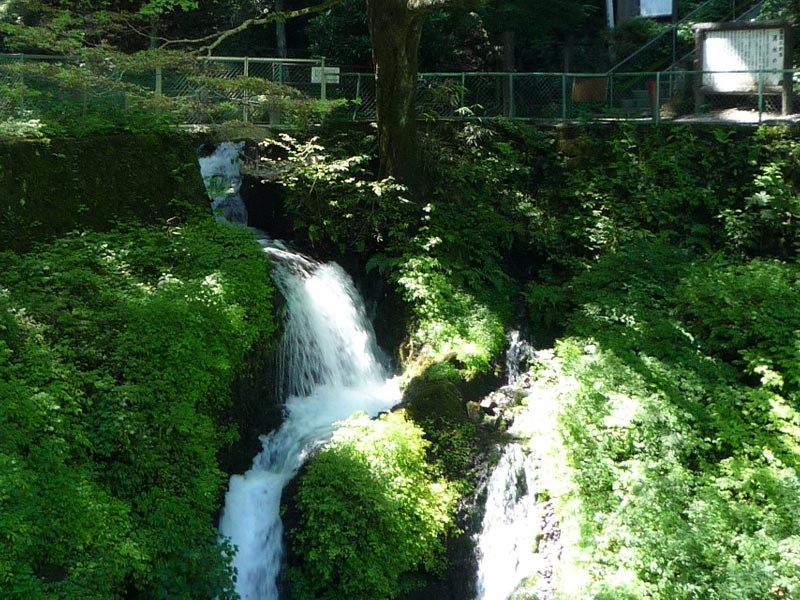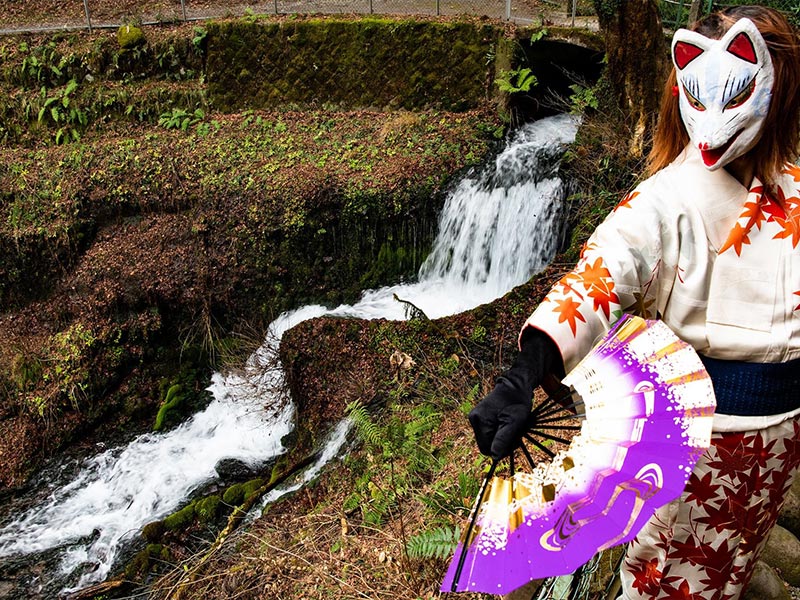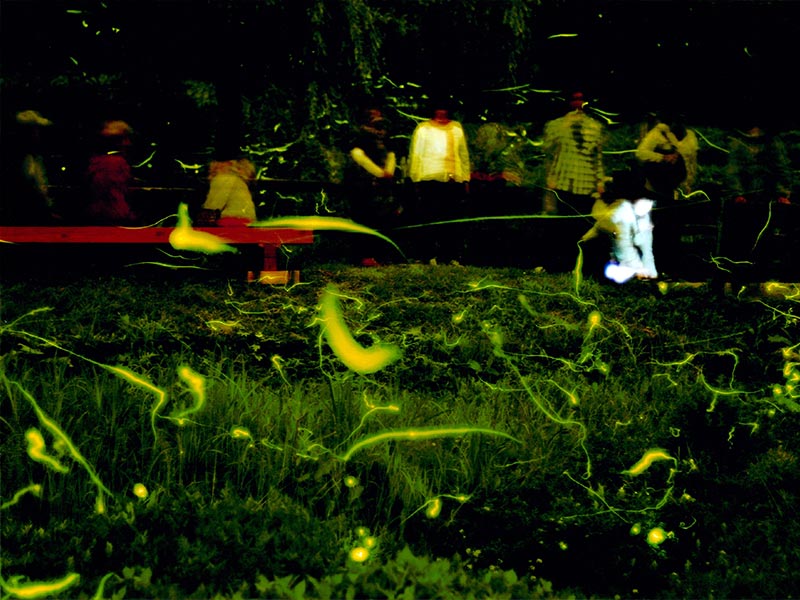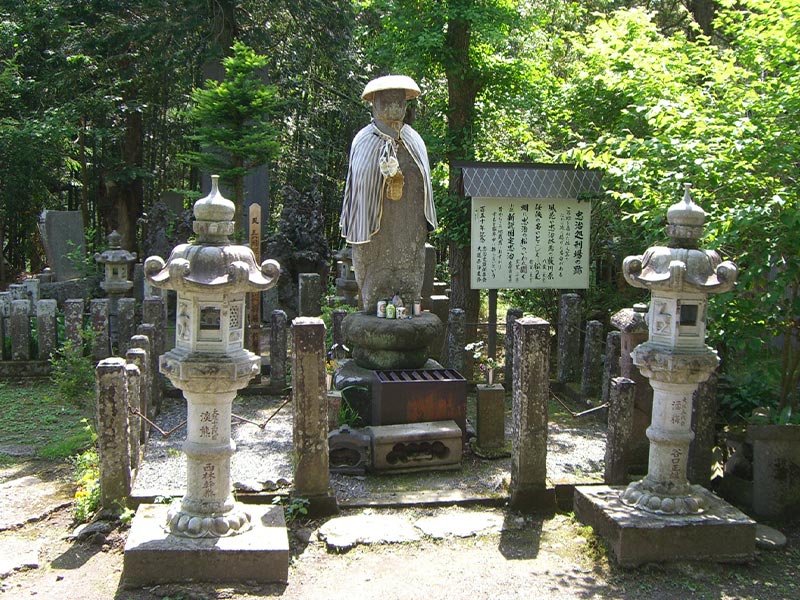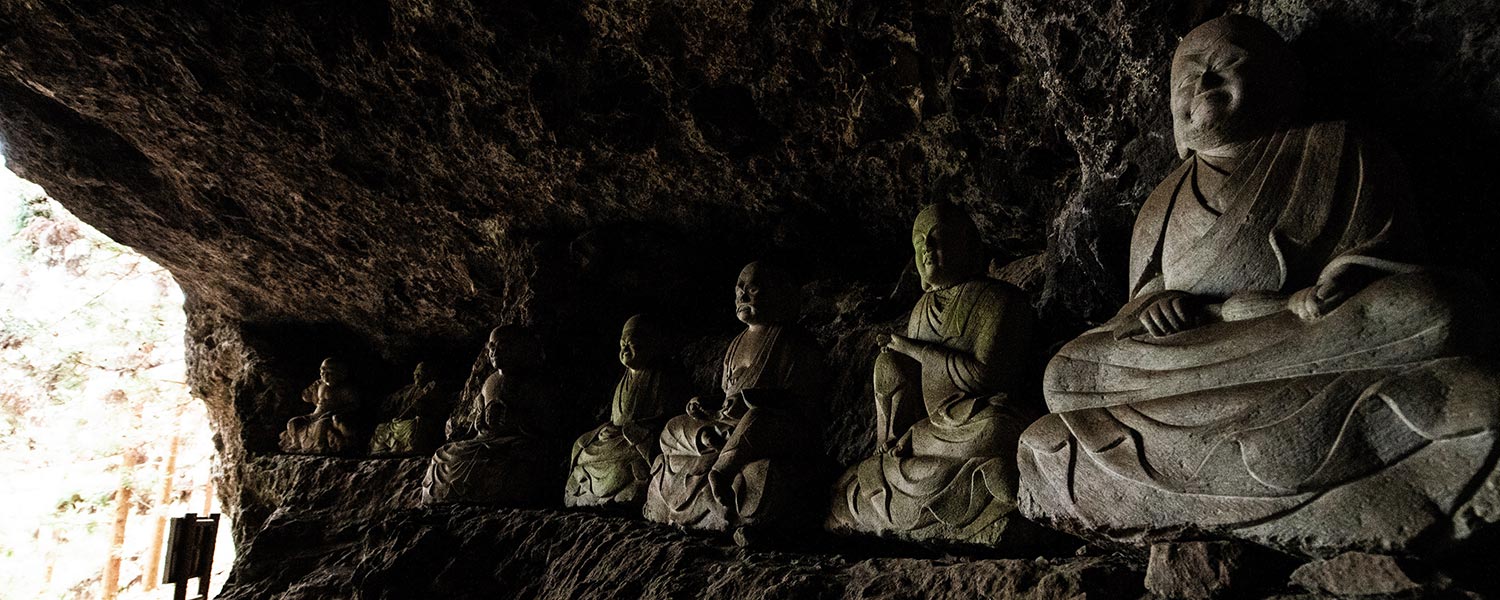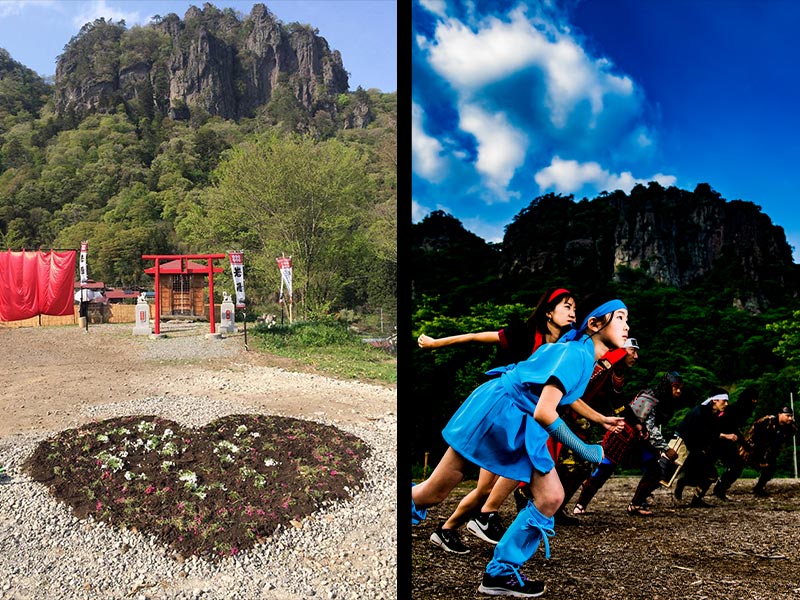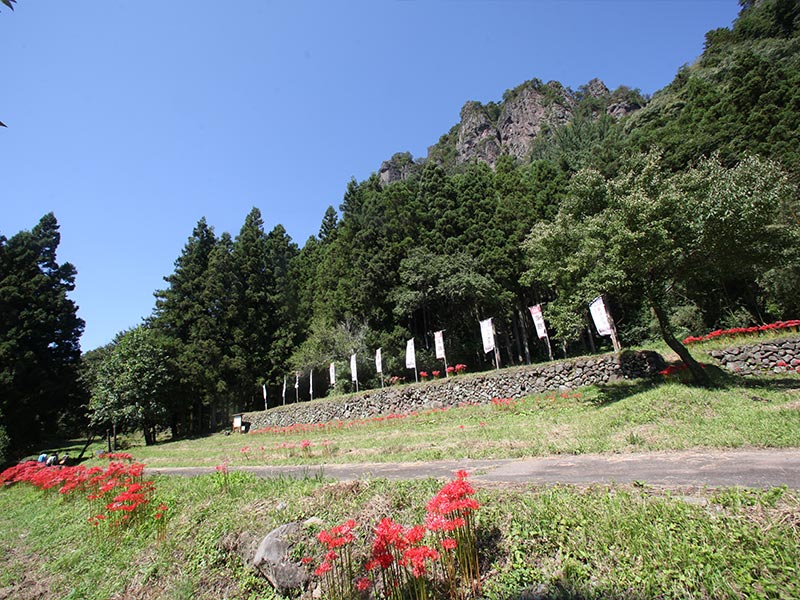
Iwabitsujou Castle Course
HIKING TRAIL
1、The Iwabitsujou Castle Ruins
The Iwabitsujou Castle Ruins, designated as a national historic site in 2019 (Reiwa 1), are a medieval mountain castle. It gained widespread fame through the NHK Taiga drama “Sanada Maru.” It is also designated in the Japan Castle Foundation’s “Continued Top 100 Japanese Castles.” The Sanada clan, acting on the orders of Takeda Shingen during the Sengoku period, seized it from the previous lord, the Saito clan, and it became the Takeda clan’s stronghold in Joshu (Kozuke), earning it the nickname “Takeda’s Three Strongholds.” After the fall of the Takeda clan, it served as the main castle of the Sanada clan until the construction of Ueda Castle. It is said that the three generations of the Sanada family – Sanada Masayuki, Nobuyuki, and Yukimura – lived in this castle. Located on a ridge extending to the northeast, it is a natural fortress with Iwabitsu Mountain to the west, a steep slope descending to the Agatsuma River to the south, and rocky terrain to the north. There are remnants of deep moats and baileys in various places. If you’re lucky, you may even encounter Japanese serow and other wildlife. It takes about a 20-minute walk from the Hirasawa Trailhead to reach the main bailey site of the mountain castle.
2、Kannon Mountain (Ryuuga-san)
This is the main temple of Shugendo in the Azuma region. It is said to have been named Kannon Mountain after the enshrinement of one hundred Kannon stone statues in 1747 (the 4th year of the Enkyo era). In the past, it was home to one of the subsidiary castles of Yanagisawa Castle, called Yanagisawajo, and its remnants can still be vividly seen today. The site features a stone gate, rock caves, and inner chambers. You can climb rocky areas using ropes and even explore caves, experiencing a sense of adventure and ninja training. A flashlight is essential for cave exploration. You can also enjoy the beautiful natural scenery of the mountain.
- Fudo Waterfall
This waterfall flows down from a cliff beside Fudo Hall at the entrance to Kannon Mountain. It is imagined as a place where ascetic practitioners are purified by the waterfall, and you can fully immerse yourself in the serene and devout atmosphere. The cool breeze during the summer is particularly refreshing. In winter, you can also witness its frozen and beautiful appearance.
- Tainai Kuguri
Pass through a small cave made of rock. Although the inside of the cave is not too narrow, be cautious as you may need to climb ladders or descend rocky surfaces. In Shugendo, passing through Tainai Kuguri symbolizes the purification of the body and soul, signifying a “rebirth.”
- Kannon Mountain Fudo Hall (Ryuuga-san Kongouin) –
A red temple located on Kannon Mountain. During the Edo period, it was considered one of the three temples of the Azuma Shugendo sect. According to legend, during the Shouoh era (1288-1292) through the Einin era (1293-1298), the lord of Iwabitsujou Castle established Daisei Fudou Myouou as the guardian deity of the castle’s northeastern direction and appointed the priest Engaku of Kongoubo as the chief priest, marking the beginning of this temple. It is said that during the Sanada era, it served as a place for prayers for victory.
3、Higashi Agatsuma Town Hall
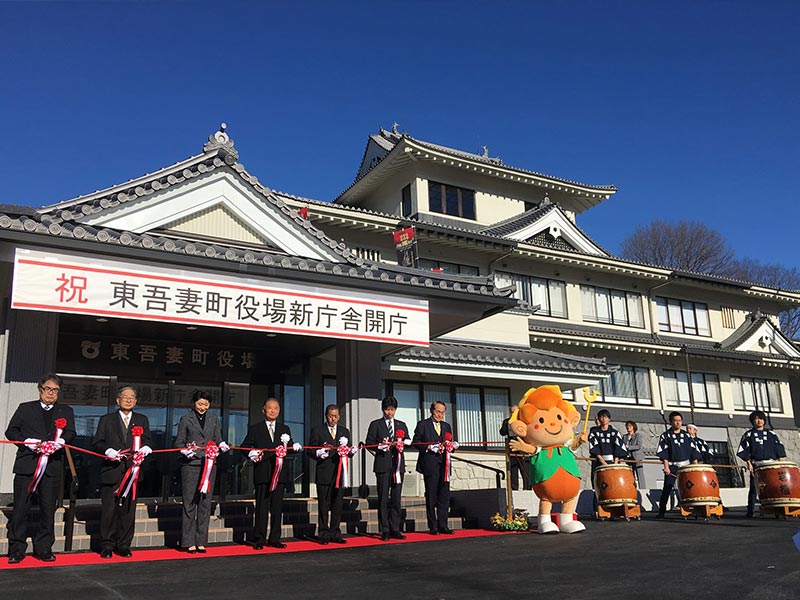
A town hall in the shape of a castle. Originally,
it was a facility called “Iwabitsu Fureai no Sato,” modeled after Iwabitsu Castle. It featured a day-use hot spring and was beloved by the townspeople. However, in Heisei 29 (2017), the hot spring facility closed, and the building was taken over by the Higashi Agatsuma Town Hall. Interestingly, the mayor’s office is not located in the castle tower.
4、Iwabitsu Sanada Ninja Museum “Ninpaku”
Located in front of Haramachi Station, “Ninpaku” is inside the Ninja Station. It showcases approximately 300 items, including shurikens, tonfas, movie posters, and more. It offers projection mapping and VR games. Come visit “Ninpaku,” where history and technology intersect.
Closed on: Tuesdays, Wednesdays, and Thursdays (Open on holidays)
Ninja course
THE ROOT OF NINJA
1、Deura-fuchi
Deura-fuchi is the site of the residence of Ideura Masasuke, a prominent retainer of the Sanada clan who served as the castle steward of Iwabitsu Castle. It can be found near the western gate of Iwabitsu Castle, which is situated along the historical route known as the “Sanada Road.” Ideura Masasuke played a crucial role as the chief ninja leader who commanded the Sanada ninja corps and was a trusted vassal of the Sanada clan. In 1583, he served as an administrator in Agatsuma Province and later became the castle steward of Iwabitsu Castle. After the abandonment of Iwabitsu Castle, he relocated to the town of Haramachi, where he passed away at the age of 78 in 1623.
2、Iwabitsu Sanada Ninja Museum “Ninpaku”
Located in front of Haramachi Station, within the Ninja Station, you’ll find the Iwabitsu Sanada Ninja Museum “Ninpaku.” This museum houses approximately 300 valuable artifacts related to ninjas, including shurikens, jitte (truncheons), kusarigama (sickle and chain), and more. Visitors can also enjoy entertainment features such as projection mapping and VR games. “Ninpaku” is a place where history and technology intersect. We invite you to come and experience it.
Closed on: Tuesdays, Wednesdays, and Thursdays (Open on holidays)
3、Nakanojo Town History and Folklore Museum “Muse”
Located in Nakanojo Town, this is a local museum that occupies the building of the former Azuma Third Elementary School, which was established in 1885 during the early years of the Meiji era. This architectural rarity is one of the few surviving examples of early Meiji Western-style school buildings and was designated as an Important Cultural Property by Gunma Prefecture in 1978. When you enter the museum, you’ll be greeted by a display of ninja tools. The museum boasts a rich collection of historical materials, cultural artifacts, and folklore items spanning from the Stone Age to the modern era, making it a highly impressive destination.
Closed on Thursdays (open on holidays).
4、Grave of Warita Shimousa Sigekatsu
This well-maintained grave, located in a rural corner of the Yokoh district near Nakanojo Town, commemorates a ninja who hailed from Yokoh, Nakanojo. He was known as the “peerless master of ninjutsu” and achieved remarkable accomplishments in battles at Nakayama Castle, Ohdo Castle, Iwaibitsu Castle, and Matsuida Castle.
5、Tomb of Karasawa Genba, also known as Sarutobi Sasuke’s inspiration
This is the grave of Kosaka Genbun, who is said to be the model for Sarutobi Sasuke, a famous ninja associated with the Sanada clan. It is located near the mountainside in the vicinity of the Yokoo and Warita-Shimousa graves in the Yokoo area. Genba was born in Kami-Sawatari, Nakanojo Town, and, through his marriage to the daughter of Warita-Shimousanokami-Shigekatsu, he became the legitimate successor to the Warita-Shimousa lineage. He was an exceptional ninja both in name and deed, and his accomplishments earned him various land holdings. He also defended strongholds throughout the Agatuma district and enjoyed the trust and favor of the Sanada clan.
Power Spot Course
SPIRITUAL PLACES
1、Hakoshima Spring
Hakoshima Spring is a renowned natural spring located in the western part of Agatsuma Town, boasting a plentiful water supply of approximately 30,000 tons per day. It originates at the base of the “Ohsugi of Hakoshima Fudodou” as big cedar tree, which is said to be around 400 years old and is a natural monument of Agatsuma Town. In 1985, Hakoshima Spring was selected as one of Japan’s Top 100 Famous Springs. Downstream, fireflies inhabit the area, making it one of Gunma Prefecture’s prime spots for firefly watching during the peak season from June to late July.
2、Jizo of Chuji
Traveling swiftly from Hakoshima Spring to the west of Agatsuma Town in the Ohdo district, you’ll come across a Jizo statue dedicated to the legendary Edo-period hero, Kunisada Chuji. Chuji was known for providing relief to the starving commoners during the Great Famine of Tenmei. However, his actions, which included killing a magistrate and releasing rice stores, led to his pursuit by the shogunate. He broke through the Sekisho of Ohdo, an important checkpoint on the Shinshu Kaido, before ultimately being crucified in this very area. The Jizo erected at the execution site is affectionately known as the “Chuji Jizo,” and people from all over the country still visit to seek blessings for their endeavors, especially in matters of competition.
3、Sennin Cave – Higashi Agatsuma Town
Heading north from the Jizo of Chuji, you’ll find a mysterious cave on the rocky hillside to the left of the road. This cave, which appears as if a large rock has been hollowed out, is said to be capable of accommodating a thousand people. Inside, you’ll find statues of the Holy Kannon and the Eighteen Arhats, creating an enchanting atmosphere. It is also believed to be the site of ancient indigenous dwellings and has legends associated with Japan’s legendary warrior, Yamato Takeru-no-Mikoto, who is said to have stayed here on his return from the Eastern Expedition. Further within the cave, after passing through the Tainai-kutsu, you’ll discover the “Inner Shrine,” which is set on a cliff and adds to the mystical ambiance.
4、Mitsu-iwa Shrine
In 2011 (Heisei 23), Mitsu-iwa Shrine was relocated from its original inner sanctuary to the current prime location in the Furuya district of Agatsuma Town, overlooking the cliffs of Mt. Iwabitsu. The inner sanctuary was situated along the Mitsu-iwa-dori hiking trail, nestled within the cliffs, and is no longer accessible. From the main shrine, you can behold the magnificent sheer cliffs and unique rock formations on the southern face of Mt. Iwabitsu, with no power lines or other distractions. Depending on the angle of sunlight, the rock surface can even reveal a likeness of Christ’s face. This shrine is dedicated to a goddess associated with the tragic legend of a princess from the Saito clan, who was vanquished by the Sanada clan. There’s no better place to escape the hustle and bustle and engage in a dialogue with the rock formations of Mt. Iwabitsu.
5、Senryu-in Ruins
The Senryu-in Ruins are the remains of a palace constructed by Lord Sanada Masayuki, the lord of Iwabitsujo Castle, to host Lord Takeda Katsuyori during Oda Nobunaga’s invasion of Koushu Province, a significant event leading to the downfall of the Takeda clan. Unfortunately, Katsuyori ended up taking his own life on Mt. Tenmoku, never reaching Iwabitsujo due to the treachery of his retainers. The palace was originally received by a yamabushi (a type of ascetic mountain monk, sometimes associated with ninja) named Nezu Senryosai, who was a relative of Lord Masayuki. It later moved and was reconstructed as a Goma Hall within the Kentoku-ji temple in Haramachi, Agatsuma Town. Today, only the stone walls remain. The valorous efforts of Lord Masayuki and his ninja could have made the Senryu-in and Iwabitsujo sites the key to the Takeda clan’s revival. Contemplating such fantasies, the area is adorned with red spider lilies during the autumn equinox.
6、Jindai Cedar
Returning to National Route 145 after visiting the Senryu-in Ruins, in the precincts of Shimagasira Jinja Shrine in the Yagura district of Agatsuma Town, you will find a massive cedar tree with an age of 1,400 years known as the Jindai Cedar. Inside this cedar tree, there is a hollow with a younger cedar tree that is about 250 years old, often referred to as the “parent and child cedar.” Legend has it that these trees were planted by Yamato Takeru-no-Mikoto during his eastern campaign. Within the shrine precincts, you will also find two stones called “Chikaraishi.” The smaller one weighs 47 kg, while the larger one weighs 98 kg. It is said that those who could lift the larger stone were celebrated as stronger individuals

